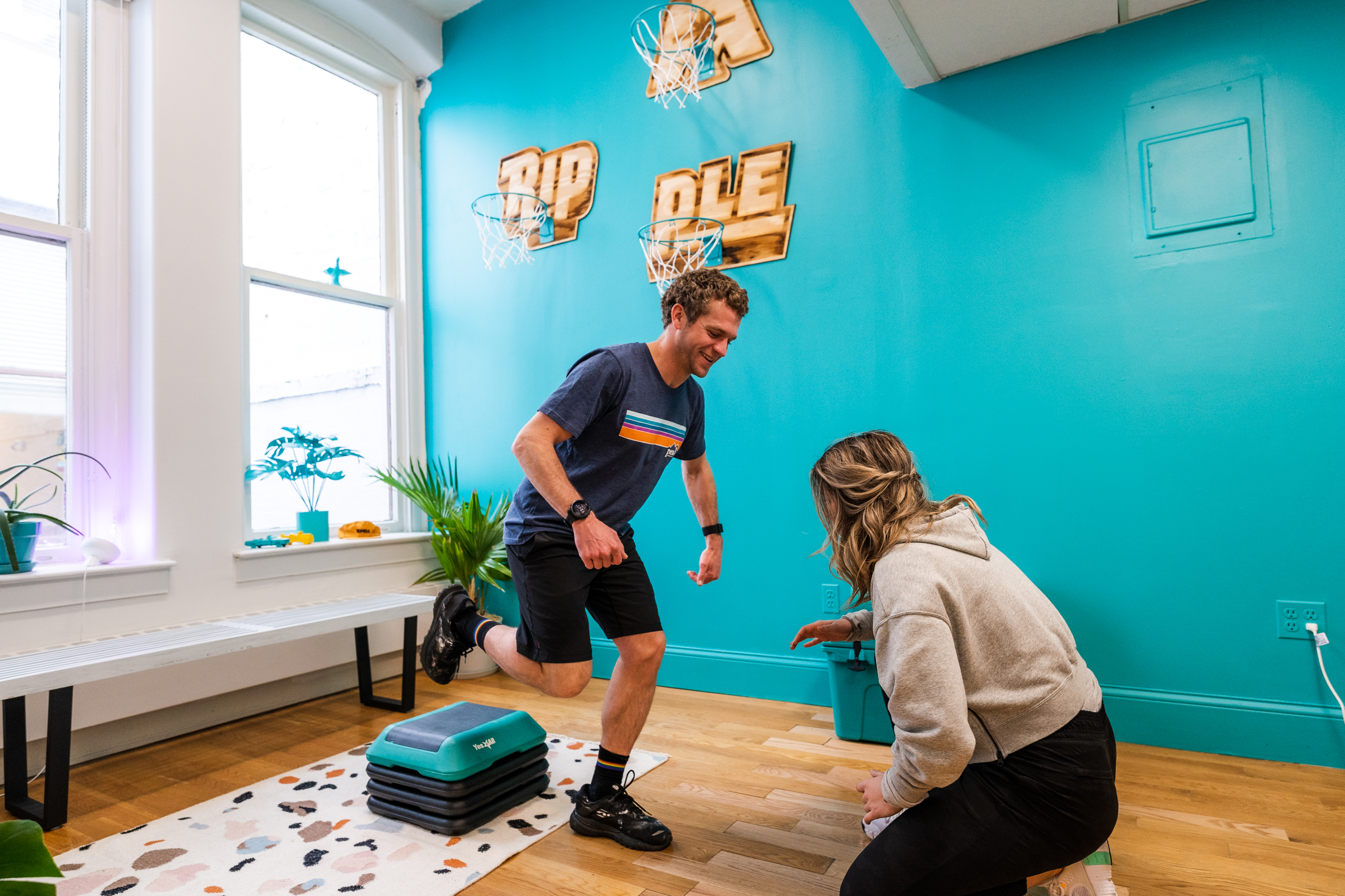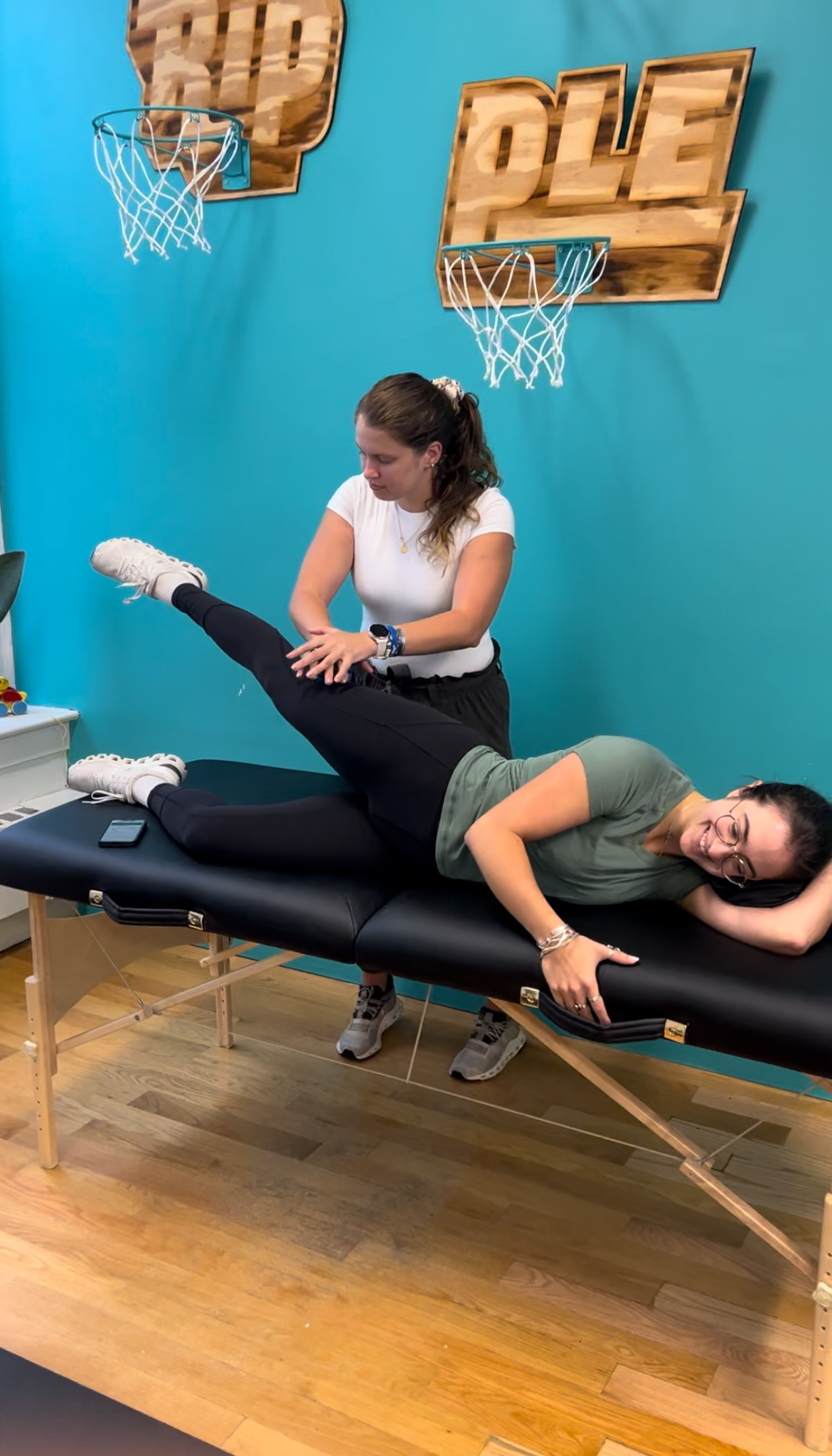Spring Running on the Esplanade: How to Stay Injury-Free

As the weather warms and Boston’s running trails fill with energy, spring is the season when runners of all levels lace up with renewed motivation. But with that surge in training volume often comes a rise in preventable injuries — especially if winter was spent indoors or with reduced activity.
Sudden increases in mileage, uneven terrain, and old movement habits can quickly resurface as stress injuries, muscle strains, or nagging joint pain. That’s why spring isn’t just a time to ramp up your pace — it’s the perfect time to get proactive about how your body is moving.
READ: From Marathon Training to Weekend Jogging: The Benefits of Physical Therapy for Boston Runners
Injury prevention starts before discomfort appears. For Boston runners, understanding how your gait affects load distribution, stride efficiency, and muscular balance can be the difference between a breakthrough season — or one cut short by avoidable setbacks.
At Ripple PT, we see spring as an opportunity to reset, reassess, and reinforce the foundations of safe, efficient running. And it all starts with how you move.
The Link Between Gait Mechanics and Injury Risk
Every step you take while running places stress on your joints, muscles, and connective tissues. When your gait mechanics are off — even slightly — those repetitive forces can add up fast, increasing your risk for common overuse injuries.
Issues like overstriding, uneven foot strike, poor hip control, or limited ankle mobility often go unnoticed until they result in pain. But these biomechanical inefficiencies can be identified and corrected early — and that’s where gait analysis comes in.
By closely evaluating how your body moves through each phase of the running cycle, we can spot the compensations that may lead to injury. These insights allow us to build a personalized plan that reduces unnecessary stress, promotes balanced movement, and supports long-term performance.
In short: if you’re looking to stay injury-free this spring, fixing how you move is just as important as how much you run.
 Common Spring Running Injuries — and How to Avoid Them
Common Spring Running Injuries — and How to Avoid Them
As runners hit the pavement again after a winter slowdown, certain injuries tend to show up more frequently in the spring. These aren’t random — they’re often the result of ramping up too quickly or running with inefficient movement patterns that haven’t been addressed.
Here are some of the most common spring running injuries and what you can do to prevent them:
- Shin Splints
Often caused by sudden increases in mileage or poor foot strike mechanics. Gait analysis can reveal early signs of overload and guide you toward softer landings and better stride patterns. - Plantar Fasciitis
Tight calves and faulty foot mechanics contribute to this painful condition. Targeted mobility work and gait correction can significantly reduce strain on the plantar fascia. - Runner’s Knee (Patellofemoral Pain Syndrome)
Caused by poor knee tracking, weak hips, or overstriding. A personalized strength plan and form adjustment — both driven by gait assessment — can help you run pain-free. - IT Band Syndrome
Often the result of lateral instability or hip compensation. Gait analysis identifies inefficient mechanics that put excess tension on the IT band, allowing for more focused treatment. - Achilles Tendinopathy
Common when runners increase speed or hill training without proper form or strength. Gait analysis helps monitor loading patterns and prevent strain on the tendon.
Avoiding these injuries doesn’t mean running less — it means running smarter. And that starts with understanding how your body moves.
READ: End-of-Season Conditioning: Staying Fit After Ski and Snowboard Season
How Ripple PT Uses Gait Analysis to Build Injury-Resilient Runners
At Ripple PT in Boston, we view gait analysis as one of the most powerful tools in injury prevention. It’s more than just observing how you run — it’s about translating movement data into meaningful, personalized strategies that help you stay healthy and perform at your best.
We start with a full-body movement screen and high-speed video capture to break down each phase of your gait cycle. From there, we assess how your joints are moving, where stress is accumulating, and what patterns could be putting you at risk.
But we don’t stop at analysis — we turn that information into action. Whether it’s improving hip control, adjusting stride length, or building better foot and ankle stability, we create a targeted plan to address your unique needs.
That might include strength training, mobility work, neuromuscular re-education, or manual therapy — all guided by what your movement tells us. Our goal is simple: to help you run stronger, more efficiently, and without setbacks, season after season.
At Ripple PT, gait analysis isn’t about perfection — it’s about building resilience and confidence in every step.
Get Ahead of Injury Season — Book Your Gait Assessment in Boston, MA
Spring is the perfect time to reset your training, sharpen your stride, and take proactive steps toward injury-free running. Whether you’re coming back from a winter break or building toward a race goal, Ripple PT is here to help you run smarter — not just harder.
READ: The Complete Guide to Brookline Physical Therapy
Our gait analysis sessions are designed for real runners with real goals. We’ll break down your movement, identify potential risks, and build a customized strategy that keeps you strong, balanced, and confident as the season ramps up.
Don’t wait for pain to tell you something’s off. Schedule your gait assessment with Ripple PT and make this your strongest, healthiest spring running season yet.


